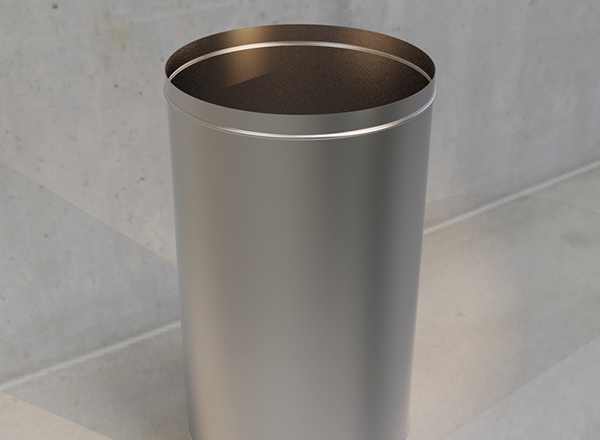Chutes play a crucial role in waste management systems, providing a convenient and efficient means of waste disposal in various industries. Whether it's a trash chute in an apartment building or an industrial chute in a manufacturing facility, these ingeniously designed systems offer numerous benefits. In this section, we will explore the purpose and functionality of chutes, highlighting how they streamline waste disposal processes and contribute to a cleaner and safer environment.
1. Efficient Waste Transport: Chutes are designed to facilitate the smooth and rapid transport of waste from one location to another. By utilizing gravity and carefully engineered pathways, chutes enable waste to flow effortlessly, eliminating the need for manual transportation and reducing the associated labor and time requirements.
2. Space Optimization: Chutes are designed to make the most efficient use of available space. They can be integrated into the architecture of buildings or custom-built to fit specific industrial settings, maximizing the use of vertical space and minimizing the footprint required for waste disposal.
3. Versatility: Chutes are versatile in their applications, catering to a wide range of industries and waste types. From residential buildings to hospitals, hotels, and manufacturing plants, chutes can be tailored to meet the unique requirements of each setting, ensuring a tailored waste management solution.
The design of chutes is based on several key principles and incorporates specific components to ensure their functionality, safety, and durability. Understanding these design principles and components provides insights into how chutes effectively manage waste disposal.
1. Gravity-Driven Flow: Chutes rely on gravity to move waste from higher to lower points. The angle of the chute, its slope, and the smoothness of the interior surfaces are carefully considered to facilitate the efficient flow of waste while minimizing the risk of blockages.
2. Structural Integrity: Chutes are constructed from durable and fire-resistant materials to ensure structural integrity and prevent the spread of fires. The materials used are selected based on their ability to withstand the weight and abrasive nature of the waste being transported.
3. Entry and Discharge Points: Chutes incorporate entry points, such as doors or hoppers, where waste is introduced into the system. Discharge points at the bottom of the chute allow for the collection or further transport of waste for proper disposal.
4. Safety Features: Chutes are equipped with safety features to prevent accidents and ensure user protection. Anti-jamming mechanisms, fire suppression systems, and emergency stop controls are among the safety measures integrated into chute designs.
Chutes find applications in a wide range of industries, revolutionizing waste management practices and enhancing efficiency. In this section, we will explore how chutes are utilized in different sectors, highlighting their specific design considerations and benefits.
1. Residential Buildings: Trash chutes in apartment complexes streamline waste disposal for residents, reducing the need for manual transportation and promoting cleanliness and hygiene. Qingdao Chute offers customized solutions for residential buildings, ensuring seamless waste management.
2. Hospitality Industry: Chutes play a vital role in hotels and resorts, enabling efficient disposal of waste generated by guests and staff. Their discreet integration into the building design maintains the aesthetic appeal of the establishment while ensuring a clean and pleasant environment.
3. Healthcare Facilities: Chutes in hospitals and healthcare facilities facilitate the safe and hygienic disposal of medical waste. Specialized chute systems designed for medical waste management adhere to stringent regulations and ensure the containment of potentially hazardous materials.
4. Manufacturing and Industrial Settings: Industrial chutes are used in manufacturing plants to transport waste materials, such as scrap metal or debris, from different parts of the facility to designated collection points. These chutes are designed to handle heavy loads and withstand the demands of industrial environments.
By catering to the specific needs of various industries, chutes contribute to efficient waste management practices, promoting cleanliness, safety, and sustainability.
In conclusion, chutes are essential components of waste management systems, streamlining waste disposal processes and promoting efficiency across industries. Whether it's a trash chute in a residential building or an industrial chute in a manufacturing facility, the design principles and components of chutes ensure their functionality, safety, and versatility. Qingdao Chute, a leading provider of innovative waste management solutions, offers customized chute designs that revolutionize waste disposal, setting new standards in the industry.

Fill in the email to subscribe to email, so that you can know our latest quotations and activities at any time